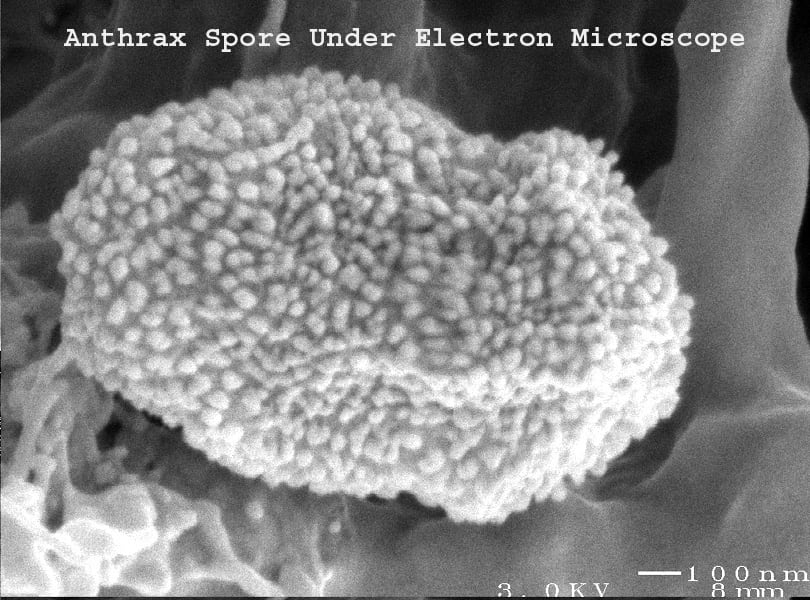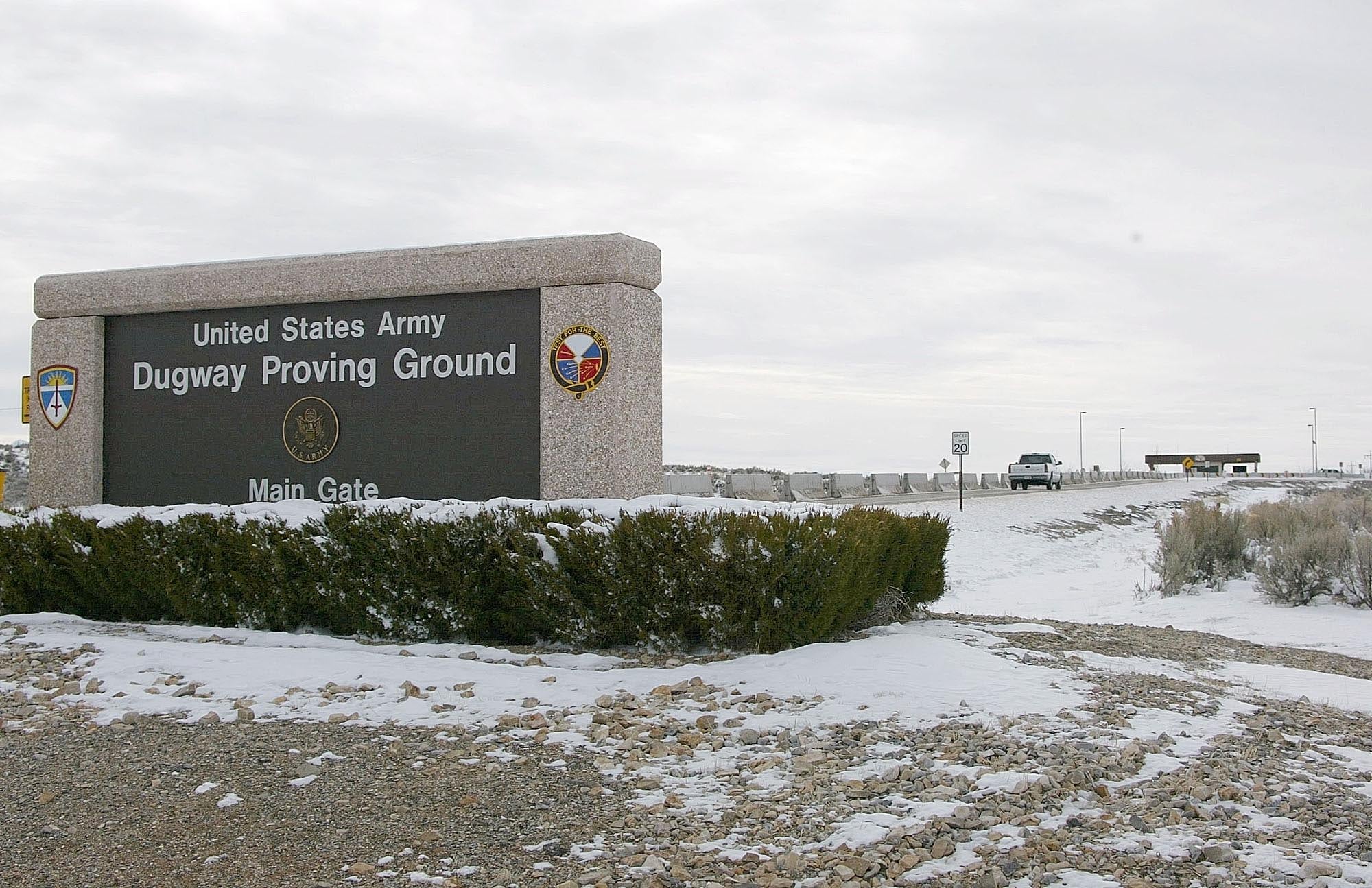A brigadier general who led an Army biodefense lab in Utah is among a dozen individuals facing potential disciplinary actions — including loss of jobs — for egregious failures that contributed to the facility mistakenly shipping live anthrax to other labs for more than a decade, according to the military's accountability investigation report that was provided to USA TODAY.
"Over time, you see there is complacency that the leadership should have recognized and taken action to correct," Maj. Gen. Paul Ostrowski, who led the review team, said in an interview.
The review found that top officials at the Dugway Proving Ground southwest of Salt Lake City had multiple warning signs of scientific and safety problems, yet they failed to take action despite earlier, serious incidents in the facility's labs during 2007-2011 involving anthrax, VX chemical nerve agent and poisonous Botulinum neurotoxin A.
"This complacent atmosphere resulted in an organization plagued by mistakes and unable to identify systemic issues in the high-risk, zero-defects world of biological select agents and toxins," the report said.
The new Army report provides troubling details about lax operations at Dugway as staff worked with some of the world's most deadly pathogens and nerve agents.
Despite being a major testing facility for the Army's chemical and biological defense programs, Dugway had appointed an unqualified biosafety officer who lacked the education and training to do the job. The facility failed to have a program to routinely test surfaces in its labs to ensure contamination hadn't been spread outside special biosafety cabinets. And some staff "regularly manipulated data" in important records certifying that pathogens being shipped to other labs were killed and safe for other researchers to use without special protective equipment, the report said.
The review harshly singles out Brig. Gen. William E. King IV, who was in command at Dugway as a colonel from July 2009 to July 2011.
"Colonel King repeatedly deflected blame and minimized the severity of incidents," the report said. "[E]ven now, Brigadier General King lacks introspection and fails to recognize the scope and severity of the incidents that occurred during his command at (Dugway)."
King was promoted to general after leaving Dugway. Last February, King was named the commanding general of the 20th Chemical, Biological, Radiological, Nuclear, Explosive Command at the Army's Aberdeen Proving Ground in Maryland.
In a statement to USA Today, King said he can't comment on the ongoing investigation, but that the safety of soldiers, families and the local community are of "utmost importance" and he supports efforts to address scientific and technical gaps associated with the safe handling of dangerous materials. King said he remains "concerned about the seriousness of the circumstances surrounding" the Dugway anthrax incident and "will continue to fully cooperate with and assist the Army in its ongoing investigation."
Decisions on any personnel sanctions have not been made by Army leadership. King was the only person facing sanctions named in the report, which was heavily redacted. As a general officer, King is considered a public figure and must be named, the Army said.
The 12 personnel who face potential discipline include two former commanders and three other leaders at the Army post, four workers with oversight responsibilities and three technicians, Ostrowski said. They range from mid-level government employees to King.
As the investigating officer, Ostrowski does not recommend corrective action or punishment. "Let me be clear, these acts in terms of accountability can be anything from counseling to retraining to remove and replace," said Ostrowski, whose 10-member investigative team interviewed 69 witnesses and reviewed records going back to 2004.
No illnesses resulted from the Dugway anthrax shipments, which were among a series of high-profile incidents at federal labs since 2014. A USA Today Network investigation published last year found hundreds of additional accidents with dangerous pathogens at corporate, university, government and military labs nationwide — and a system of self-policing and fragmented oversight that obscures failings by facilities and regulators.
The review is the latest to examine how a research facility at Dugway could have mistakenly shipped live anthrax specimens — labeled as killed — for more than a decade to unsuspecting researchers developing detection equipment and diagnostic tests against bioweapons. The live anthrax ended up at nearly 200 private, academic and federal labs located in every state plus nine foreign countries.

An anthrax spore an under electron microscope. Photographed at the Life Sciences Test Division of the Army's Dugway Proving Ground in Utah.
Photo Credit: U.S. Army
Dugway's failures to fully kill anthrax specimens with radiation went undetected for more than a decade by military officials and federal lab inspectors from the Centers for Disease Control and Prevention. It was only discovered last May, when a private biotech firm that received some of Dugway's purportedly killed anthrax specimens did their own tests and found the spores could still grow.
Dugway's authority to work with any potential bioterror pathogens remains suspended by the CDC. And in an interview with USA Today, Lt. Gen. Thomas Spoehr said Dugway will no longer be allowed to produce pathogen specimens for shipment to other facilities.
"They will make what they need for their own internal testing purposes," Spoehr said, "but they will not be an exporter of biological products for the greater world or anybody else other than for Dugway's internal use."
The Army's investigation has found that systemic issues contributed to Dugway's live anthrax shipments, including gaps in scientific knowledge, poor lab practices and a "culture of complacency."
Spoehr said all of the Pentagon's biodefense labs remain under a self-imposed research moratorium while a new, unified lab oversight structure is put in place and protocols for working safely with pathogens are standardized and undergo scientific review. The process, especially creating verified kill methods for anthrax specimens — plus reliable tests to verify the spores are dead — could take another year, Army officials said.
Restarting the biodefense research is critical in developing a wide range of tests and equipment to protect against deadly pathogens, such as those that cause Ebola, plague, botulism and anthrax, said Maj. Gen. Brian Lein, commander of the U.S. Army Medical Research and Materiel Command. "We have to do this to protect our troops going into harm's way," he said.
Anthrax spores can be potentially fatal if inhaled. More than 30 people who had contact with the Dugway specimens were put on antibiotics as a precaution after the live specimens started being discovered last May.
The military's accountability review was launched last summer to determine if there were any failures of leadership at the Dugway Proving Ground. An initial Pentagon investigation last year found Dugway's lab records showed a 20% failure rate when it used radiation to kill anthrax specimens and indications that officials at the facility should have known there was a problem.
USA Today reported last year that Dugway had previously faced a federal enforcement action in 2007 for improperly shipping live anthrax that was put through a different kill process that treated spores with chlorine dioxide. Records obtained under the Freedom of Information Act showed what experts said were egregious and cavalier failures by a Dugway lab worker. In testing a batch of anthrax to confirm it had been thoroughly killed, the worker saw that some was still alive and able to grow in a test tube, but simply threw out that tube and issued "death certificates" for the rest of the batch. A lab that received the specimens found that some of the anthrax bacteria it received also was still alive.
The new accountability review highlights this mistaken shipment of live anthrax, which the report said went to the Lawrence Livermore National Laboratories, as one of several red flags that should have triggered wider safety reviews and action years ago by Dugway's own leadership.
Despite federal lab regulators concluding by 2009 that the live anthrax shipments to Livermore were a serious violation that would have merited a $500,000 fine if Dugway were not a government entity, the report says Dugway's commander failed to follow up adequately. The report indicates Dugway staff disputed some aspects of lab inspectors' findings and that King, as their commander, "had a duty to direct a comprehensive investigation" to resolve the dispute, but didn't.
The report also faults King with missing another opportunity to assess the effectiveness of procedures and staff at Dugway after receiving a report in early 2011 warning of a "relaxed attitude" in a critical chemical laboratory at the facility following an incident with VX nerve agent. The report notes that King and other Dugway leadership took appropriate action in issuing reprimands and removing personnel within the chemical test facility, but didn't consider that such negligence could extend to other operations.
In addition, the report says King knew about erroneous shipments of Botulinum neurotoxin A, which had caused Dugway to fail a 2011 inspection by the Department of the Army Inspector General. "Instead of considering all of these events as indicators of potential deep-rooted and widespread problems at (Dugway), he attempted to minimize the impact of the events," the report said. King sent an email to his superiors downplaying the seriousness of the neurotoxin shipping errors, the report said, despite CDC lab regulators and enforcement officials maintaining that the issue "was always considered serious" and carried a potential $1.5 million fine.
Since 2007, Dugway leadership and management "repeatedly displayed a tendency to question the validity of substantiated claims … and downplayed the seriousness of incidents and mishaps occurring within the Life Sciences Test Facility," the report said. Leadership also failed to comprehensively investigate incidents or take disciplinary action.
The "complacent environment" persisted, the report said, even after federal lab regulators repeatedly identified serious violations in how Dugway handled potential bioterror pathogens and authorized heavy fines, which ultimately were not imposed because Dugway's is a government entity.
The report also slaps Dugway personnel for "multiple" incidents of sloppy lab practices after reviewing 90 days of videotape of workers in highly-secure facilities. In one incident in late May, after the anthrax scandal broke, a technician is shown dropping a petri dish to the floor. Instead of alerting the Dugway safety office and reporting the incident to the CDC and Army officials, the woman picks up the sample and puts it in a cabinet to continue working on it. She is also seen touching her face under her air-purification mask.



